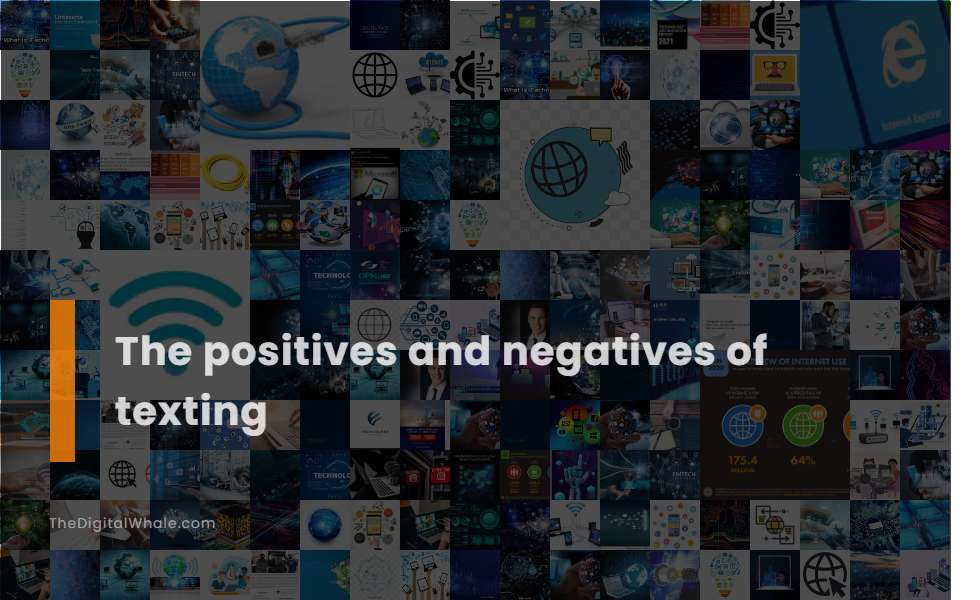The Positives and Negatives of Texting
What are some of the cons of texting? What are the negative effects of texting? Let's find out more about The Positives and Negatives of Texting.

Texting conveys messages fast
Texting is remarkably efficient for quick communication, with messages often composed and responded to in real-time. The immediacy of texting is underscored by the fact that an overwhelming 98% of texts are read within one minute of delivery, leading to faster engagement compared to other forms of communication. By utilizing carrier-verified services, the speed and reliability of text message delivery are further enhanced. For a deeper insight into the pros and cons of texting versus email, the VIPTap article offers a comprehensive analysis. It's clear that in today's fast-paced world, texting stands out as a powerful tool for quick and effective communication, making it a preferred choice for many who need to convey messages swiftly.
Texting is accessible and does not require a WIFI connection
Texting is highly accessible and does not require a WiFi connection, as it can be sent and received using cellular network connections, making it reliable even in areas without internet access. This advantage is evident in conventional SMS, which remains operational as long as there is a cellular network connection, ensuring communication continuity. However, certain features like MMS may require cellular data for execution. For a deeper understanding, visit the MessageDesk Blog, which explores the top advantages of texting in detail.
Texting is concise and efficient
Texting is concise and efficient because it forces brevity due to character limits, making messages clear and quick to understand. It allows for immediate communication without the need for formal greetings or signatures. Additionally, Texting is simple and straightforward, enabling businesses to deliver important messages directly and quickly, with a high read rate of 98%, making it an effective method for immediate and interactive communication.
Everyone uses texting, regardless of age
Texting is a universally preferred method of communication across all age groups, with those between 35 and 44 years old sending the most texts per day, while younger generations like Millennials and Gen Z also heavily rely on texting. Even older adults send a significant number of texts, highlighting its widespread use and acceptance. However, negatives include distractions such as texting while driving or in inappropriate settings, and the potential for decreased face-to-face communication skills. For an in-depth look at these trends, visit the Texting Statistics website.
Text messages have high open and response rates
Text messages boast exceptionally high open rates, averaging around 98%, and impressive response rates, with up to 45% of recipients responding within the first hour. This makes SMS a highly effective tool for immediate engagement and lead generation. Compared to email marketing, which typically experiences much lower engagement rates, the efficiency and effectiveness of SMS in business communication are unmatched. By utilizing this powerful method, businesses can significantly outperform traditional email campaigns. For more insights on this topic, visit the Sender Blog to explore the advantages of using SMS as a communication tool.
Related:
I'm experiencing text neck, which is a chronic strain from looking down at a phone. Are you worried about your teenage daughter's cell phone addiction? Let's find out more about Cell Phone Addiction Among Teenagers.
Texting allows for personal and timely communication
Texting facilitates personal and timely communication through its immediacy, conciseness, and high priority, ensuring messages are read almost immediately and allowing for quick, conversational exchanges. This form of communication provides high open rates and non-intrusive interaction, enabling messages to be sent and responded to at the convenience of both parties. For further insights into the advantages of texting, one can explore how it serves as an efficient and time-saving communication tool.
Texting is not suitable for long-form communication
Texting is not suitable for long-form communication because its nature as a Short Message Service (SMS) makes it inconvenient to convey lengthy messages, often leading to confusion or the need to switch to a more appropriate medium like Email or a phone call.
It can be hard to discern emotions in a text
Texting poses a significant challenge in discerning emotions due to the lack of non-verbal cues such as facial expressions and tone of voice, leading to potential misunderstandings and misinterpretations of the emotional context of a message. This limitation is extensively explored in the findings shared on the Frontiers in Psychology website, which highlights the complexities involved in digital communication. Understanding these challenges is essential in navigating the modern landscape of communication effectively.
Texting can feel intrusive if messages are too frequent
Texting can feel intrusive if messages are too frequent, as sending multiple texts in a short period can be irritating and make the recipient feel overwhelmed, especially if they are busy and cannot respond immediately. Frequent texting can lead to feelings of intrusion and irritation, particularly if the recipient is busy or prefers not to be bombarded with messages. This highlights the need to respect the other person's time and boundaries. For more insights, consider exploring these Healthy Texting Habits to maintain a better texting relationship.
Texting has limited multimedia support and character limits
Texting has limited multimedia support and character limits, with standard SMS messages restricted to 160 characters, which can lead to message segmentation and additional costs if exceeded. While MMS offers more flexibility with a 1600-character limit, it still has limitations in terms of content and delivery. For more detailed information on these limitations, visit the Tithe.ly Help Center.
Related:
What socialization and communication skills do technology-avoidant students lack? What is the impact of technology on communication? Let's find out more about The Impact of Technology On Communication Skills.
